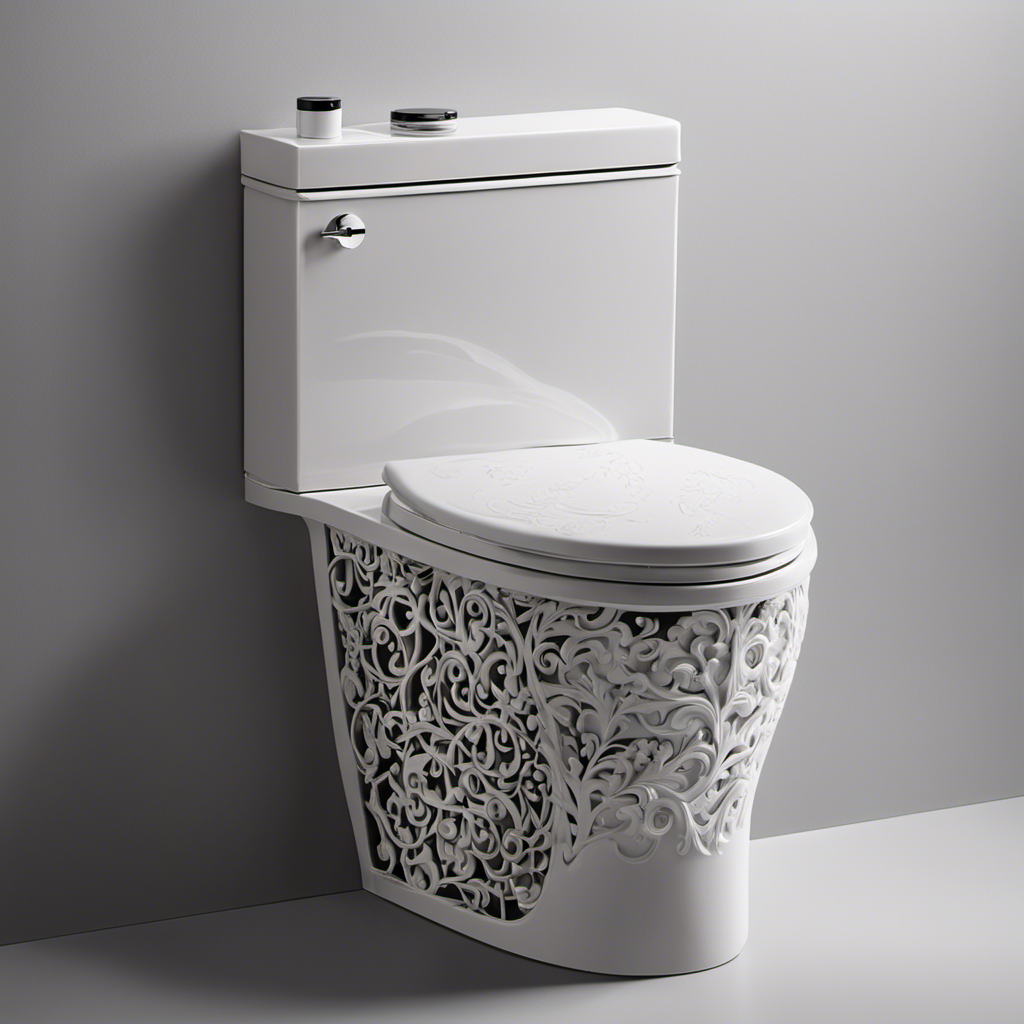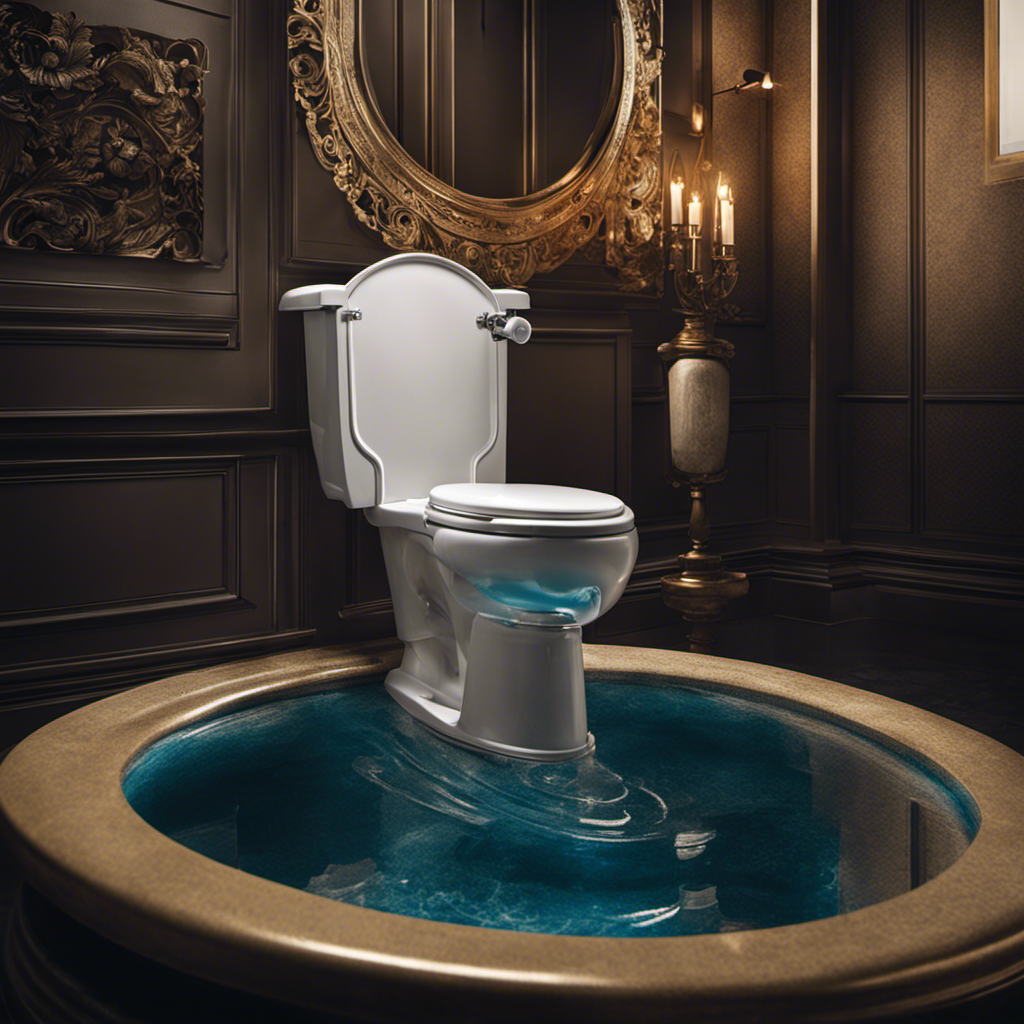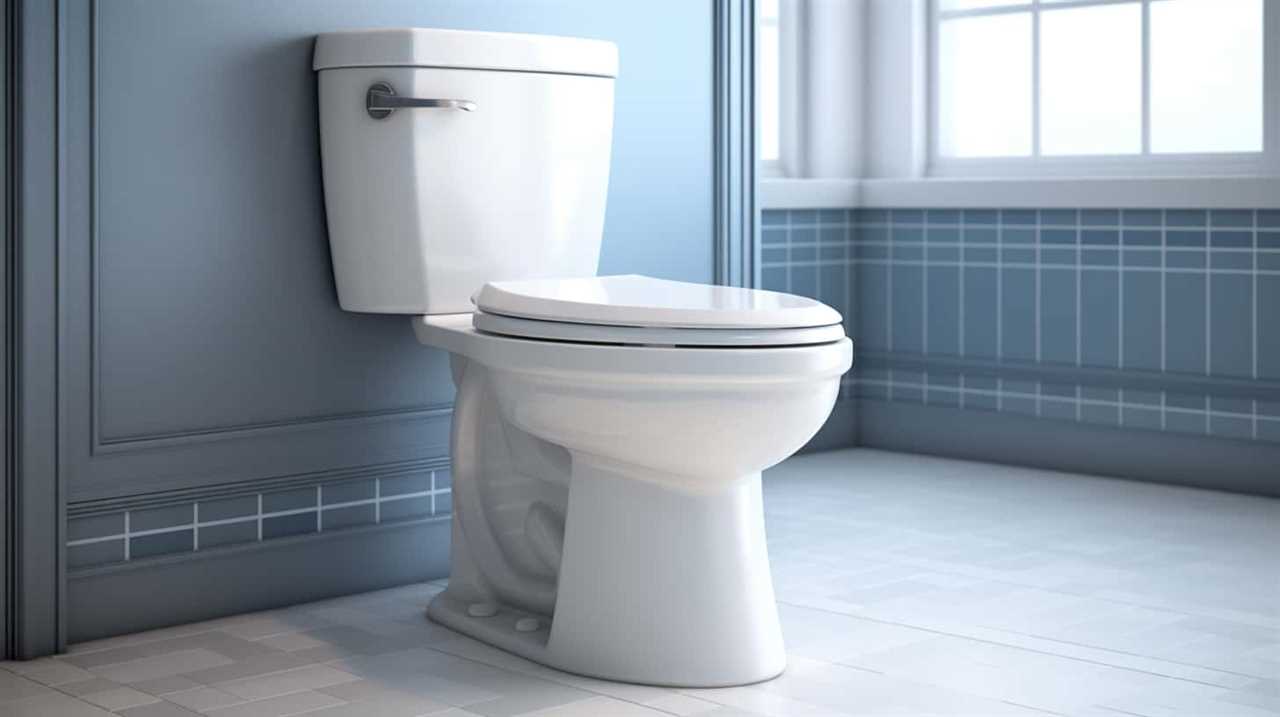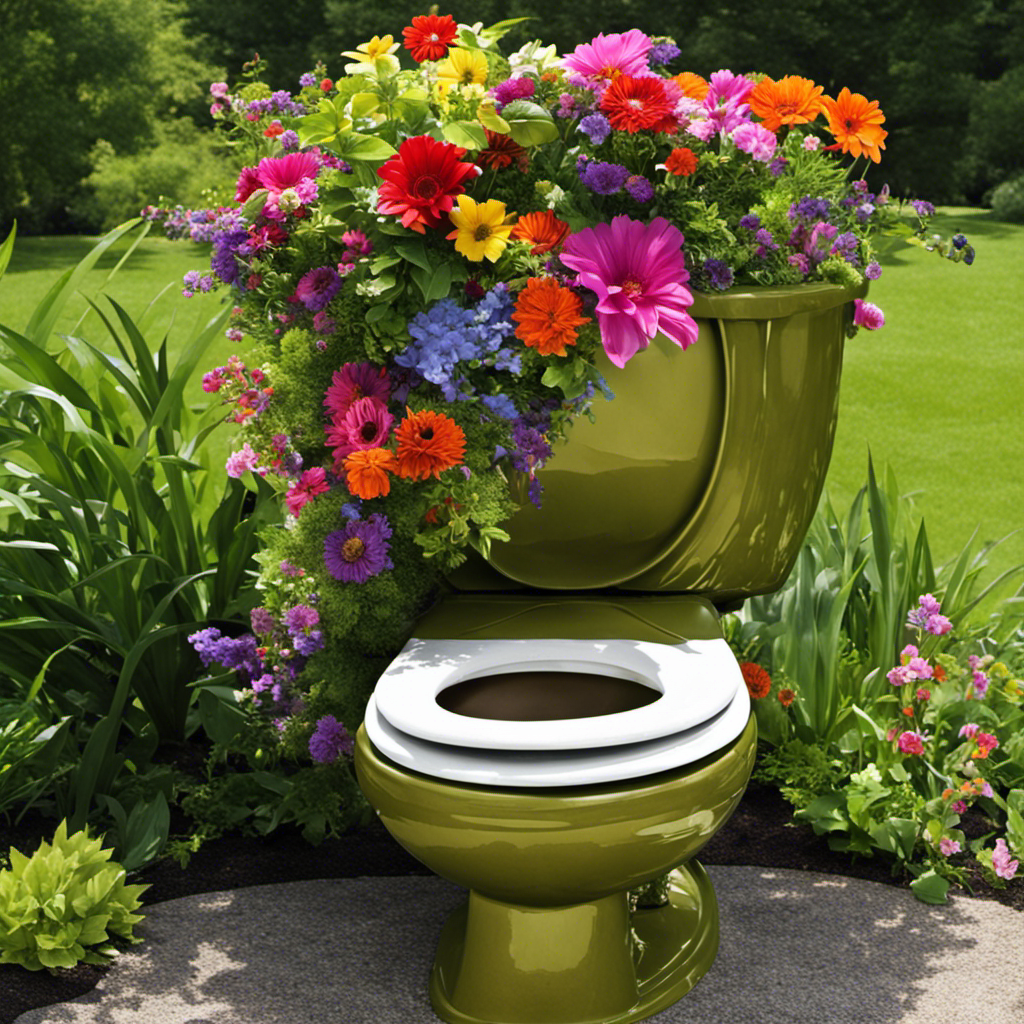Ever wondered why your toilet flush lacks the power to handle even the smallest of loads? Well, fear not, because I’ve got the solution for you.
In this article, I’ll show you how to increase your toilet flush power with a few simple steps. From understanding the flush mechanism to checking and adjusting water levels, we’ll delve into the technical details that will make your toilet flush like a champ.
So get ready to bid farewell to weak flushes and embrace the power of a strong, efficient toilet flush.
Key Takeaways
- Understanding the flush mechanism components is crucial for troubleshooting and optimizing water flow.
- Checking and adjusting the water level is important for proper functioning of the toilet.
- Clearing clogs and blockages can be done using a plunger or a toilet auger.
- Upgrading flushing components such as the dual flush mechanism, flapper valve, fill valve, and flush handle can improve efficiency and water pressure.
Understanding the Flush Mechanism
To increase your toilet’s flush power, you should understand how the flush mechanism works.
The flush mechanism is a combination of components that work together to create a powerful flush. The key components include the flush valve, fill valve, and trip lever.
The flush valve is responsible for releasing water from the tank into the bowl to create the flush. The fill valve is responsible for refilling the tank after a flush. The trip lever is the handle that activates the flush.
Understanding how these components work will help troubleshoot common issues and optimize water flow.
For example, if your toilet has a weak flush, it could be due to a clogged flush valve or a faulty fill valve. By understanding the flush mechanism, you can easily identify and fix these issues to improve your toilet’s flush power.
Checking and Adjusting Water Level
Check if the water level in your tank is at the correct height. This is an important step in maintaining a properly functioning toilet. Here are four key things to keep in mind when checking and adjusting the water level:
-
Checking for leaks: Look for any signs of water leakage around the base of the toilet or on the floor. Leaks can cause the water level to drop and affect the flush power.
-
Inspecting the float: The float is responsible for controlling the water level in the tank. Ensure that it is not damaged or stuck in a position that is too high or too low.
-
Adjusting the float: If the water level is too low, adjust the float to increase it. This can usually be done by bending the float arm downwards. Be careful not to bend it too much, as it may cause the toilet to continuously run.
-
Verifying the correct level: Once you have made any necessary adjustments, check if the water level is now at the correct height. It should be around 1 inch below the overflow tube.
Clearing Clogs and Blockages
When clearing clogs and blockages, make sure to use a plunger in a vigorous up-and-down motion. This will help create enough pressure to dislodge the obstruction in the toilet bowl. It’s important to note that the water pressure plays a crucial role in effectively clearing the clog. To ensure maximum water pressure, make sure the water supply valve is fully open. Additionally, check if the toilet’s jets are clear of any debris as they help in creating the necessary pressure. If the blockage persists, you can try using a toilet auger to reach deeper into the pipes and break up the clog. Remember to always exercise caution and wear protective gloves when working on toilet clogs.
| Tips for Clearing Clogs and Blockages |
|---|
| Use a plunger in a vigorous up-and-down motion |
| Check water supply valve |
| Clear toilet jets of debris |
| Consider using a toilet auger for stubborn clogs |
Upgrading Flushing Components
Upgrading flushing components can improve the efficiency and performance of your toilet. Here are four ways to optimize flushing efficiency and water pressure:
-
Install a dual flush mechanism: This allows for a full flush or a reduced flush, depending on the waste volume, saving water and increasing flushing power.
-
Upgrade the flapper valve: A worn-out flapper can cause leaks and reduce flushing power. Replace it with a high-quality, adjustable flapper for better performance.
-
Replace the fill valve: An outdated fill valve can lead to weak flushes and slow refills. Upgrading to a modern fill valve with adjustable settings can optimize water pressure and refill speed.
-
Upgrade the flush handle: A sturdy and ergonomic flush handle ensures a smooth and powerful flush every time.
Regular Maintenance and Cleaning
To maintain optimal performance, it’s important to regularly clean and maintain your toilet’s flushing components. This includes the flapper, fill valve, and flush valve. Neglecting these parts can lead to reduced flushing power and potential clogs. Additionally, regular cleaning helps prevent toilet bowl discoloration and deals with hard water stains. Here’s a simple maintenance routine to keep your toilet in top shape:
| Component | Cleaning Process | Frequency |
|---|---|---|
| Flapper | Check for wear and tear. Replace if necessary. | Every 6 months |
| Fill Valve | Remove any debris or sediment. Adjust water level if needed. | Annually |
| Flush Valve | Clean the rim holes and valve seal. Ensure proper water flow. | Every 3 months |
Frequently Asked Questions
How Much Water Should Be in the Toilet Tank for Optimal Flush Power?
For optimal flush power, it’s important to consider the toilet tank capacity and water pressure. The right amount of water in the tank ensures a strong and efficient flush, minimizing the need for additional measures to increase power.
Can I Use a Plunger to Unclog My Toilet if the Flush Power Is Weak?
Yes, using a plunger is a common DIY toilet unclogging method. However, if the flush power is weak, it may not be enough. Consider trying alternative methods like using a toilet auger for better results.
What Are the Signs That Indicate I Need to Upgrade My Flushing Components?
When it comes to toilet flush repair, knowing when to upgrade your flushing components is crucial. Signs like weak flush power or frequent clogs indicate the need for an upgrade. Upgrading toilet components can significantly improve flushing performance.
How Often Should I Clean the Toilet Bowl to Maintain Flush Power?
I clean my toilet bowl regularly to maintain flush power. The frequency of cleaning depends on usage, but I find that cleaning it once a week with a good toilet bowl cleaner keeps it functioning well.
Is It Normal for the Toilet to Make a Gurgling Sound After Flushing?
It’s not uncommon for a toilet to make a gurgling sound after flushing. The causes can vary, from clogs in the drain pipe to issues with the venting system. Troubleshooting weak flush power can help resolve this problem.
Conclusion
In conclusion, by following these simple steps, you can significantly enhance your toilet’s flush power.
Understanding the flush mechanism and checking the water level are crucial.
Clearing clogs and blockages is essential for optimal performance.
Upgrading flushing components can also make a noticeable difference.
Lastly, regular maintenance and cleaning will keep your toilet working efficiently.
With these techniques in place, you’ll have a toilet that flushes with fantastic force, leaving you feeling satisfied and secure in its superior strength.










